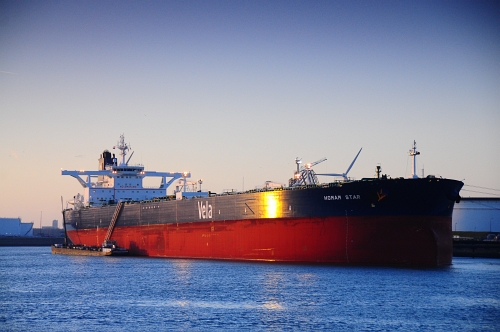
About this course
Live lectures delivered online, over 3 days (Tuesday, Wednesday and Friday from 09.30 - 15.00 Central European Summer Time (CEST)). Next run starts 2nd August 2022. See below for detailed timetable.
The course aims to give the participants comprehensive knowledge of ship design, inspection and maintenance. As a marine engineer or manager, it is of great importance to have a clear understanding of the design, fabrication, inspection and maintenance requirements and techniques in the maritime industry.
Upon completion, the participants will have a clear understanding of:
- the interrelation between shipowners, classification societies, flag authorities and shelf state authorities;
- surveillance principles and schemes, and how to optimise these for minimum downtime and interruption of operations;
- practical implications of statutory and shelf regulations and important issues in rules and regulations;
- ship hull and strength, considering stresses, corrosion and fatigue;
- requirements for ships' survey;
- statutory survey schemes and requirements;
- hull surveillance schemes.
Who should attend?
- Marine engineers who wish to expand their knowledge particularly in design, operation, and inspection of ships
- University students
- Project engineers
- Operations and maintenance engineers and technicians
- Engineers from all disciplines who are new to the maritime industry
- Managers and executives in the maritime industry
Course Syllabus and Notes
Tuesday, 2nd August
09.30 – 10.30 (CEST) - Introduction and the superintendents’ world with a focus on interrelations (PSC, flag, charterers, insurance, class) In this module we consider the interrelation between shipowners, classification societies, insurers, flag authorities, and port state authorities. We look at the role of classification societies, the practical Implications of IMO rules and important issues in upcoming rules.
We will gain a practical understanding of the hull and strength and look at stresses, corrosion and fatigue. We look at the knowledge required for surveys, management systems and hull surveillance schemes.
10.45 – 11.45 (CEST) - Tanker hull structural breakdown – function of hull elements (side, bottom, deck, transverse bulkhead, longitudinal bulkhead, and web frames, including relevant hull damages for all structural elements) Structural, technical and aspects of tankers and maritime regulations that apply to oil and chemical tankers. Hull structural breakdown – function of hull elements: side, bottom, deck, transverse bulkhead, longitudinal bulkhead, and web frames including relevant hull damages for all structural elements. A particular focus is also given to structural inspection procedures in detail.
12.45 – 13.45 (CEST) - Strength and simple beam theory focuses on naval systematic, hull structure and force flow, strength concept and design aspects, general ship hull rules, global and local details strength. An overview is given of hull structural analysis and modelling such as the three cargo hold model, part ship model, full ship model, and local model under four levels of analysis methods.
14.00 – 15.00 (CEST) - Hull inspections and repairs The purpose of this part of the course is to improve the quality of hull inspections, enhance our ability to evaluate the criticality of structural defects and improve reporting skills. During this module, we will learn about the basic functions of a ship’s hull repair and maintenance principles and how structural inspections are conducted. We also consider the rules for ships in operation.
Wednesday, 3rd August
09.30 – 10.30 (CEST) - Hull damages Overview of damages and repair methods in hull structures and equipment. The topics in this module are relevant for all ship types, with an emphasis on oil tankers.
We describe the most serious, and some of the most common damages which may happen to the ship’s structure, and what mechanisms are behind them.
We will look at the difference between local and global damages, the theory behind the minimum thickness list and some of the main causes for fatigue cracks.
A few main points with what surveyors need from superintendents regarding hull damages will be given, followed by a discussion on real case studies.
10.45 – 11.45 (CEST) - Corrosion control and cathodic protection aims to provide in depth knowledge on the corrosion control of structural steel for ship structures. We look at different corrosion forms, inspection/monitoring of corrosion and coating types, selecting the type of cathodic protection. We will focus on sacrificial anodes (SACP) and impressed current cathodic protection (ICCP). The details of anode design and calculations’ steps will be provided.
12.45 – 13.45 (CEST) - Material technology (material properties, selection, and substitution of the materials) covers the basic requirements of steel materials and substitute materials as per IACS Recommendation No 47., focusing on the selection of materials for ship structures based on material classes/structural category and thickness. We consider the minimum extent and requirements to assess the equivalency between normal or higher strength hull structural steel grades, the effect of high tensile steel, steels for low temperature service and end with a discussion on real case studies.
14.00 – 15.00 (CEST) - Types of welded steel joints covers welding types such as fillet, partial and full penetration welding and others, where calculation methods are provided.
Friday, 5th August
09.30 – 10.30 (CEST) - Ship fabrication and improvement of structural details ‘’Experience Feedback’’ provides an overview of damages and repair methods in the area of ship hull structures and equipment. The quality of hull inspections and their ability are evaluated with regard to the criticality of structural defects.
We look at typical cracks in offshore structures and ways to modify and improve the design; pipe penetrations and installations and what goes wrong with the ship and ship structural details? We end with a discussion on real case studies.
10.45 – 11.45 (CEST) - Port state control covers port state control (PSC), PSC procedures (targeting, inspections, and detentions), and measures on-board to avoid and handle detentions. We look at PSC and Class actions.
12.45 – 13.45 (CEST) - Ships – requirements for the certification of compliance with international maritime conventions covers technical and operational aspects of ships and maritime regulations that apply to oil tanker vessels. We examine flag state regulations, class rules, and international conventions and how these are related.
14.00 – 15.00 (CEST) - Revision and Timed Test (around 1 hour)
The multiple choice final exam tests the learners’ understanding of the main principles covered in the course.
Frequently Asked Questions
Course Leader
Dr. Ozgur Ozguc studied naval architecture and marine engineering at the Technical University of Istanbul in Turkey in 2002. He received his Ph.D. degree on the hull girder ultimate strength and fracture toughness of damaged marine structures from University of Glasgow in UK in 2006.
He spent 15 years overseas where he gained vast experience in design, building and repair of offshore structures and ocean going vessels. He worked as a team leader, project manager and lead structural engineer at INPEX E&P South Korea and Australia, TOTAL E&P UK, Det Norske Veritas Norway & Singapore and Bureau Veritas.
Dr. Ozguc worked on many different offshore projects, such as FPSOs, including the world's first F(D)PSO conversion, drill-ships, FLNG, semi-submersible platforms and wind turbine installation jack-up vessels and provided engineering support and guidance.
He has also delivered many seminars and workshops to Asian yards, designers and owners in Far East Asia.
Dr. Ozguc has published 56 papers in international journals and conference proceedings. Since May 2017, he works as Assoc.Prof.Dr of naval architecture and offshore engineering design and analysis at the Istanbul Technical University.

